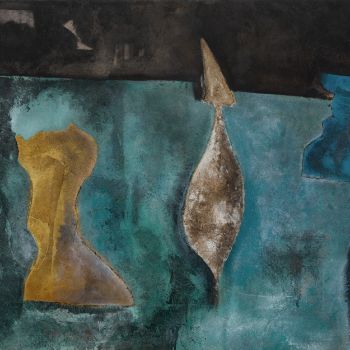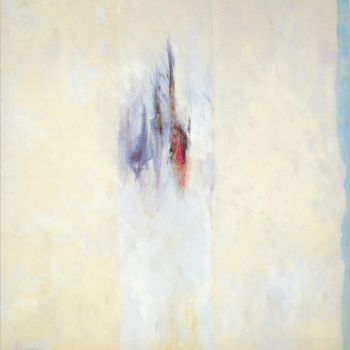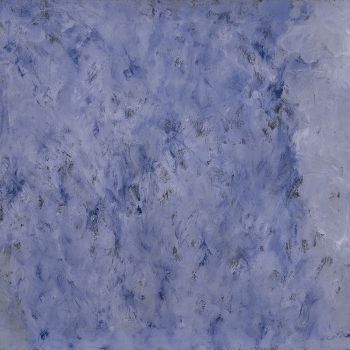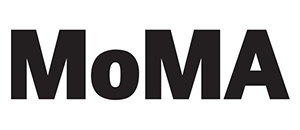Theodoros Stamos
The youngest of the first-generation abstract expressionists, Theodoros Stamos was born in New York in 1922, to Greek immigrant parents. At thirteen, Stamos received a scholarship to New York’s American Artists’ School, where he studied sculpture. After dropping out of school in 1939, he held several jobs and concentrated on painting. While working in a frame shop in New York from 1941 to 1948, he met Arshile Gorky and Fernand Léger; during the early 1940s he visited An American Place, Stieglitz’s gallery, where he particularly admired the work of Arthur Dove. In 1943, he met Adolph Gottlieb and Barnett Newman, with whom he shared an interest in the sciences and primitive cultures. He frequently visited New York’s American Museum of Natural History. Stamos was only twenty when he received his first solo exhibition in 1943 at the Wakefield Gallery in New York, and by the late 1940s he was an established member of the abstract expressionists. Stamos’s interests were closely related to this circle of painters, who during the 1940s searched for profound truth and universally significant content through myth and biomorphic abstraction. The mature techniques of Stamos, Rothko, and Newman, based on expressive color fields, were subdued and tranquil in comparison to the explosive, gestural painting of fellow abstract expressionists Pollock and de Kooning.
His earliest compositions, painted in browns, greens, and golds, evoke the appearance and texture of the earth—rocks, terrain, sand, and water. The forms resemble, in some cases, fantastic amoeba-like creatures and plants drifting underwater, in others, planetary bodies inhabiting otherworldly, barren terrain. Over time, the emphasis upon literal and material qualities gave way to a more ethereal interpretation of his motifs. He increased the subtleties of light and the size of the canvases; his paint application became thinner and the color range broader. At times, the gesture of his brushstroke, whether rough or delicately calligraphic, was more pronounced. However, his underlying intent remained to create imagery that would be universal in spirit, drawn from nature.
In 1947, Stamos met the collector Peggy Guggenheim, and fellow artists John Graham, Mark Rothko, and Mark Tobey, the latter during a trip he took to New Mexico, California, and Seattle. His first one-man museum exhibition was held at The Phillips Gallery in 1950, the same year he taught at Black Mountain College in North Carolina. In 1951, Stamos moved to East Marion, New York, where he developed an expressive color-field technique. Beginning in 1955 and for the following twenty-two years he taught at the Art Students League. From 1970 on, he spent part of every year on the island of Lefkada in Greece, where he started his Infinity series. After ending his teaching career in 1977, Stamos traveled extensively and had numerous one-person shows in New York and Europe. He died in Greece in 1997.
Theodoros Stamos | Selected Press
-
This highly personal artist is long overdue for a major retrospective
The Christian Science Monitor | Apr. 20. 1981










